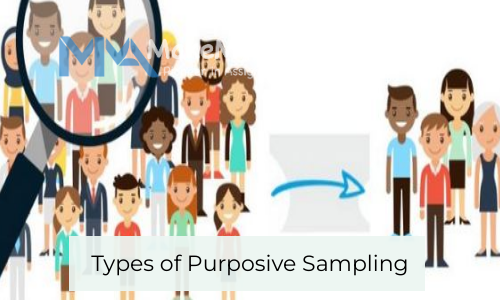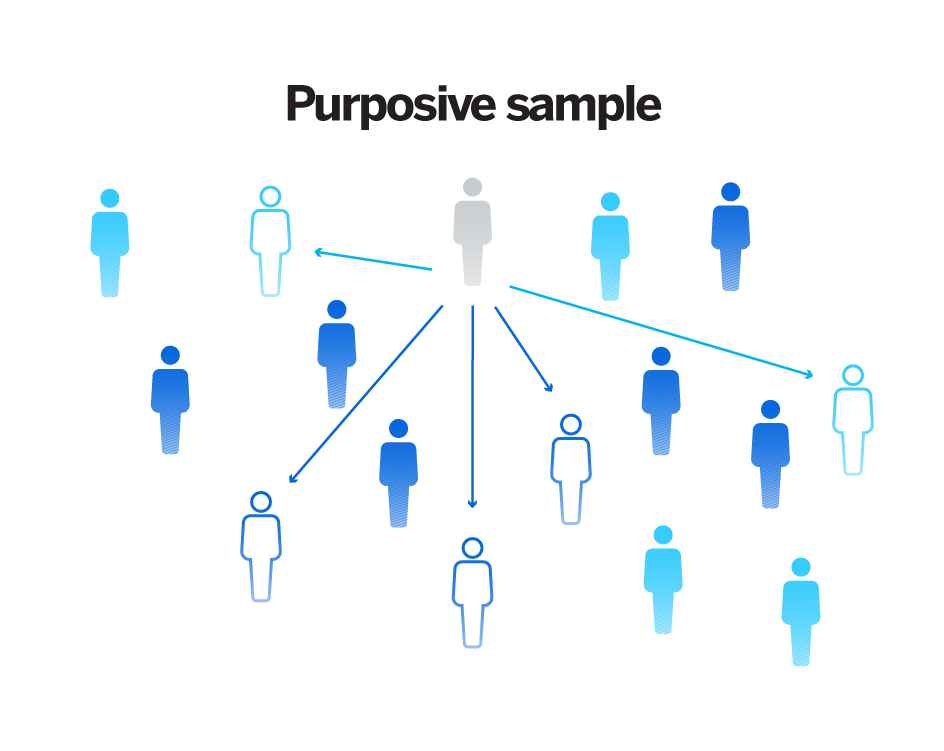
Types of Purposive Sampling
Purposive sampling is a kind of research technique where the researcher develops a sampling frame based on his project. The term purposive here means an idea, aim, or purpose imposed through a sample. It further reflects a desire where the sample completely fits with a population based on similar characteristics. In most of the studies, purposive sampling is used by the researcher in combination with non-probability methods of data collection, such as focus groups, observation, and interviewing. In such situations, samples are chosen based on specific criteria; instead of randomly selecting them from a group.
This kind of sampling can also be used with probability methods such as polls and surveys, where randomization is either not possible or desirable. With the help of purposive sampling, you can sometimes receive quick answers to general questions, but you cannot draw conclusions that can be applied to a larger group. Purposive sampling is also named judgmental sampling, where humans determine the type and number of people included in the sample.
Purposive sampling types
While conducting descriptive research, researchers mostly employ this technique to obtain interpretative and qualitative results, which cannot be achieved from statistical or quantitative means. But you cannot say that purposive sampling works best in such scenarios; rather, it merely acknowledges such applications. There are many different types of purposive sampling, and some of them are-
Convenience
Under this kind of sample, people or things happen to be conveniently available for the research at the time they want. Convenience samples are full of homogeneous characteristics because they share similar traits like age, religion, race, etc. While conducting research through this method, ensure that there are enough members from the target population who are willing to participate.
Snowball
When you ask your participants for referrals of other potential respondents, then you categorize them as snowball samples. This method is quite useful for the target population because, at times, it is difficult to define or comprehend as many hidden members who cannot be revealed through standard research methods. However, your snowball samples must be approached with proper caution. Remember, you should never replace any other form of sampling over this method because it increases the chances of sampling bias.
Opportunity
Here the participants are chosen because they are readily available, cheap to recruit, and easy to work with. For instance, if you want to study the behavior of consumers on social media, it would make sense if you chose Facebook as your initial purposive sample. Again, this would be cheap/easy to use and will provide you with a list of potential customers based on their demographic details. The same goes for researching university graduates who are looking for opportunities, to begin with, their career; it might be easier for you to find them on social media platforms like LinkedIn.
Problems associated with this method
There are many problems associated with this approach; some of them are-
Self-selection bias occurs when participants have an influence over the characteristics of the whole sample. This might lead to observed relationships where results are biased due to systematic differences between those who wish to participate in the study and those who did not.
Response error takes place when the sample population fails to represent those who wish to participate in the study accurately.
Sample inhomogeneity also falls under this category of issues, where the sample you constructed particularly for your study cannot be assumed to reflect the opinions and behaviors of the wider population.
Suppose, by any chance; you do not have enough amount of resources, money, or time for your study. In that case, purposive sampling might not be considered to be the most effective technique for obtaining a representative sample due to limited generalizability. Instead, you can go for random sampling methods, where randomly selected participants reflect all members of the population.
It is very important to consider each and every factor when deciding upon a method of data collection for your research project. Apart from this, if you face any difficulties with your research projects or assignments, feel free to contact our online assignment writing services for professional help and guidance.



